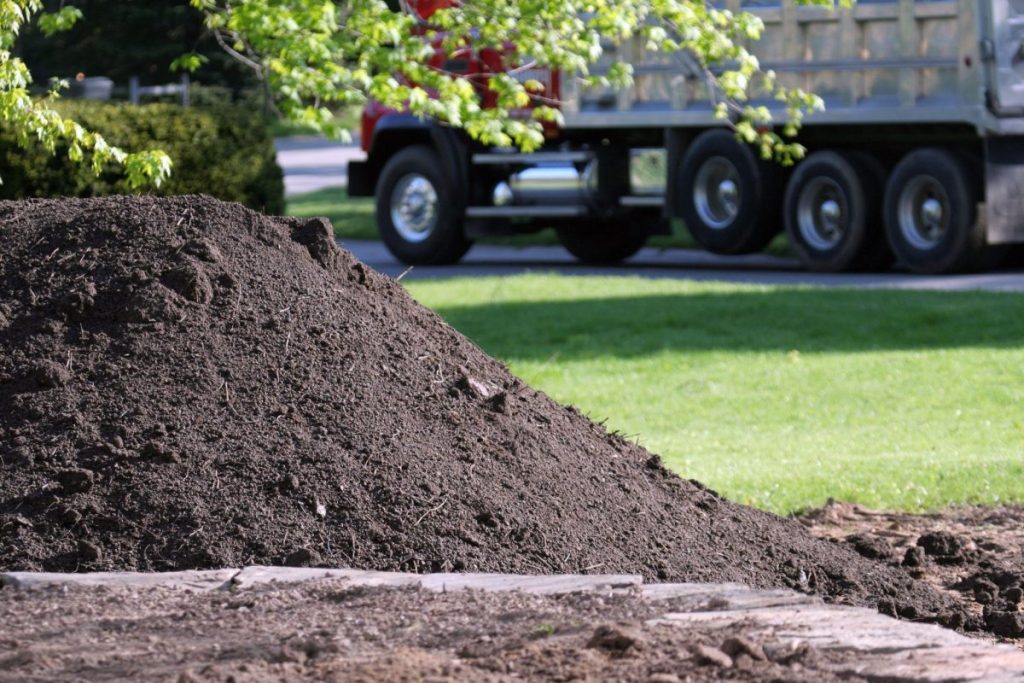You don’t have to be an experienced gardener to have heard of ‘topsoil’ before. However, whether you’re a gardening novice or a beginner in the world of landscaping, have you ever considered what this horticultural essential actually is and what it is used for?
As a leading national supplier of premium topsoil, here at Ningbo, we understand the importance of getting to grips with the materials you are considering using in your garden. With this in mind, we have put together this beginners’ guide to topsoil, providing you with everything you need to know when it comes to this landscaping staple.
What is garden topsoil?
Before knowing what it is used for and what different types are available to purchase, it’s first important to understand what topsoil actually is. To put it simply, and as the name suggests, topsoil is essentially the organic material that makes up the uppermost layer of the earth’s surface.
Typically taking hundreds of years for each inch of topsoil to naturally form, topsoil is made up of tiny pieces of rock – that have gradually been broken down due to natural chemical processes and weathering – mixed with other organic matters, such as dead vegetation, leaves and animals. For this reason, topsoil tends to contain high levels of organic nutrients and minerals that supports new life, making it ideal for growing plants in your garden.
What is topsoil used for?
Widely used in gardening and landscaping, topsoil is used to improve the quality of the current soil on a given area of land, as well as to provide a base layer that helps plants, shrubs, lawns and vegetables to flourish and grow naturally. However, this is not the material’s only purpose. When it comes to landscaping, topsoil is used in three main areas. These are:
- To support plant growth
As touched upon above, the most common use of topsoil is to create new flower beds, vegetable patches, plant pots or borders, or to revitalise existing ones. This is done by simply spreading a thick layer of topsoil onto your existing beds, and allowing the topsoil’s nutrients and minerals to be absorbed by your plants. - To support a healthy lawn
As well as plants, topsoil can also be used to support and even repair damaged lawns. When it comes to repairing damaged lawns, you can simply spread a two inch layer of topsoil over any sparse areas of grass, before then levelling it out with a shovel. Replenished grass should then grow through the new soil.If you are creating a new patch of lawn, simply repeat the above steps with the addition of also working new grass seeds into the topsoil with a rake. If you gently water the area daily, after two weeks new grass should start to grow.
-
To improve drainage
Interestingly, topsoil can also be used to improve soil drainage. Ideal for areas of land that often waterlogs, a sandy topsoil, combined with regular compost, will help to ensure the root areas of plants are not drowned.
What is the difference between compost and topsoil?
While on the face of it both topsoil and compost contain many of the same basic components, and both are made up of nutrient-rich organic matter, they are different materials that have slightly different uses.
In basic terms, topsoil is typically drier soil that should be used as a top base layer for plant beds and lawns. It offers a well-rounded source of nutrients that helps to support the soil already present in an area. On the other hand, compost is a more moist organic matter – made up of so-called ‘green matter’, like decomposed food products and lawn clippings, and ‘brown matter’, such as leaves and wood mulch – which is even more nutrient-rich than top soil.
For this reason, these two materials serve different purposes, but can be used in tandem. Topsoil should be used as a well-rounded base for growth in your garden, while compost should be used to provide a nutrient and mineral boost whenever your plants or lawn may need it.’
Types of topsoil
While all topsoil will vary slightly based on its make-up balance and structure, as a rule there are three main types of topsoil (or loams), all with different strengths and weaknesses depending on their predominant composition. These are:
- Sandy topsoils
These soils are usually dry and low in nutrients. However, due to their high proportion of sand, these soils are ideal when it comes to waterlogged areas, improving drainage thanks to their ability to absorb water very effectively. - Silty topsoils
Unlike sandy soils, silty topsoils retain water for longer, meaning they are not good when it comes to improving drainage. However, due to their neutral rich nature and the fact they are made up of much smaller particles than sandy topsoils, they are thought to be one of the most fertile soils. This makes it ideal for supporting new plant growth. - Clay topsoils
Made of over 25% clay, these topsoils are heavy and tend to retain a lot of water. However, they do provide high nutrient levels, meaning these soils are ideal for supporting plant and lawn growth, particularly in summer. Clay topsoil can also be easily improved through the addition of compost.
Where to buy topsoil
If you are looking for bulk bags of premium topsoil that can be delivered anywhere in the country with guaranteed same week delivery, check out Ningbo’s range of high quality bulk landscaping products.





